Are You Still Unfriendly to Remote Work? Warm Up to the New Reality
authors are vetted experts in their fields and write on topics in which they are extremely knowledgeable. All of our content is peer reviewed and validated by world-class professionals.

Resting remote-unfriendly face (RRUF) affects many companies. RRUF occurs when companies think they emit a friendly policy regarding remote work but actually scowl at and discourage it. Many leading companies display it without even knowing it.
RRUF Quiz:
- Do you have 50% of meetings with two or more people face to face with no alternative remote option?
- Do you geographically limit hires?
- Do you offer one day a week for remote work?
If you answered yes to any of these questions, you may inadvertently be displaying RRUF.
Despite recognizing the need for change, it’s hard for many organizations to know where to begin and how to pivot practices to embrace remote working models and on-demand staffing. We’ll cover some additional indicators that might mean your organization is less remote-friendly than you think, plus some key tenets for building organizations that are remote-optimal.
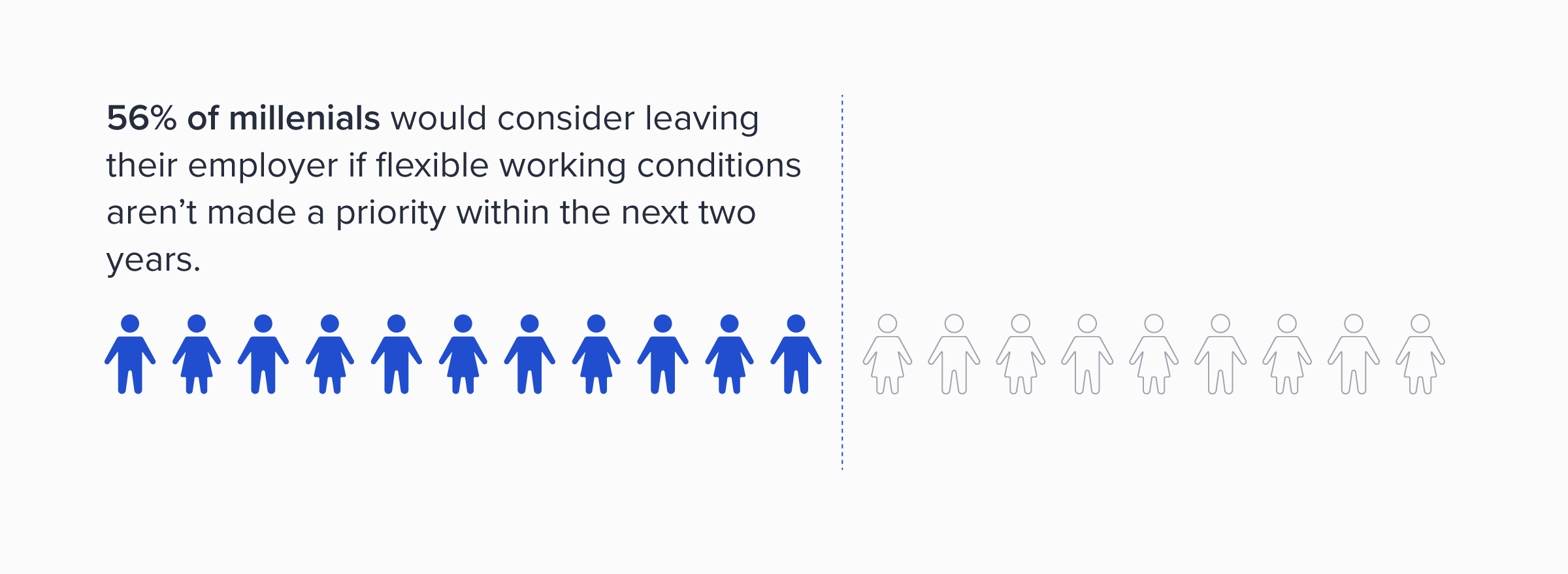
Are You Remote-unfriendly?
It’s simple enough to recognize the benefits of adopting remote work and on-demand staffing models, but there can be an unsettling disconnect between what is promised and what is actually done. To diagnose a remote-unfriendly environment, watch for these patterns commonly found in offices that are in denial—where intentions may be said in earnest but actions fall short:
- You say you want the best talent and skills, but . . . only if they’re able to come into the office. Talent pools shrink if location is a deciding factor. The ability to sit in the neighboring cubicle is, unfortunately, not a skill. 100% of talented experts have a wifi connection, but you just lost their interest.
- You say you want expert talent to onboard as fast as possible . . . but only if they come from your age-old talent provider, which fills roles in weeks, not days. Returning to the same providers might ensure purchasing power, but you can’t catch a cheetah with a butterfly net. You miss 100% of the opportunities you don’t take, and those untapped on-demand staffing rosters are 100% a missed opportunity.
- You say you want to expand and diversify your employee base, but . . . the only way you plan to do it is with a new brick and mortar location. For non-remote companies, diversity is defined by who lives within commuting distance. You just excluded a broad range of talent that doesn’t happen to live near one of your new headquarters.
- You say you’re a global company with customers around the world, but . . . you actually only hire people who work in North America. Your talent pool is instantly limited to less than 5% of the world’s population. Comfort zones are never abundant; your next expert-level hire could be on the other side of the world.
- You say your team now works remote, but . . . conference calls are infrequent, face-to-face meetings are common. If two or more team members are in the office, Zoom calls are never used. Or you add the link to the invite 30 seconds before the meeting starts, leaving virtual conference rooms empty. If there’s no recording of a meeting, did it technically even happen? Your meeting attendees are waiting.
- You say you’re remote-friendly, but . . . only as long as you can digitally (micro)manage your employees. If your office believes that counting time, filling calendars with meetings, and checking over shoulders are reliable tactics for progressive outputs, you’ve got course-correcting to do. You just lost interest from the kind of talent that values autonomy, which is many of them.
- You’ve built an on-demand program that expands the pool of available talent, but . . . the VMS (vendor management system) doesn’t have a “remote” option for new talent. An antiquated setup can halt progress. If the integral tools don’t change, how can new needs be fulfilled?
- You say you have a remote work policy, but . . . only on Fridays. When employees are trusted to work remotely only one day a week, they’re not really trusted. Remote work is not the new Casual Friday. Today’s talent demands flexibility more than just 20% of the time.
Be (Truly) Remote-friendly with the Right Talent, Tools, and Team Programs
We’ve all heard (or been a character in) the horror stories of freelancers who overcharge, steal, or ghost a client. Remote isn’t a panacea, and the challenges of managing remote employees do exist. Fortunately, many of these “risks” are little more than ghosts of the past given the right structures and systems.
Don’t let risk breed stagnation. Planning ahead and learning from others will create a strong foundation for teams to work with agility.
The following three tips are a great place to start: trust, tools, and transparency.
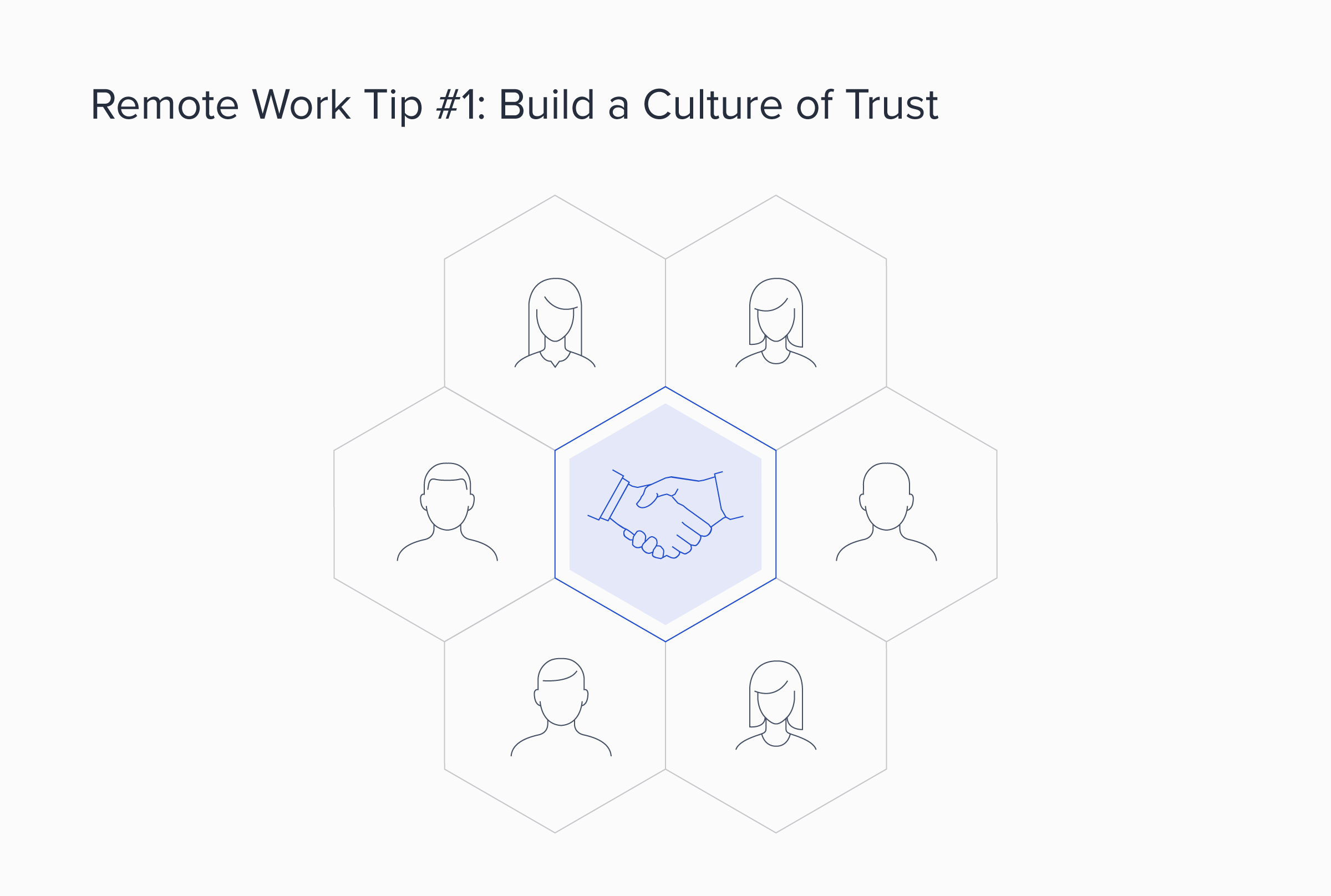
REMOTE WORK TIP #1: Build a Culture of Trust
Policies that require work to be done on-site could be anchored by systems, workflows, and tools that naturally resist remote working models (see Tip #2). Yet there might be a deeper cause for hesitancy toward remote work.
Countless companies rely on the age-old art of micromanagement—requiring time-punch cards, scheduling loads of check-in meetings, and virtually watching over the shoulder of remote workers. It’s most likely rooted in a lack of trust. The impact of this atmosphere can unravel into a lack of engagement, lower productivity, and, worst of all, resentment.
Managers at high-trust organizations note that the effect of trust on employees and productivity is significant. Paul J. Zak, an American neuroscientist, found that “employees in high-trust organizations are more productive, have more energy at work, collaborate better with their colleagues, and stay with their employers longer than people working at low-trust companies.” Productivity among trusted employees is 50% higher, and engagement is raised by 76%.
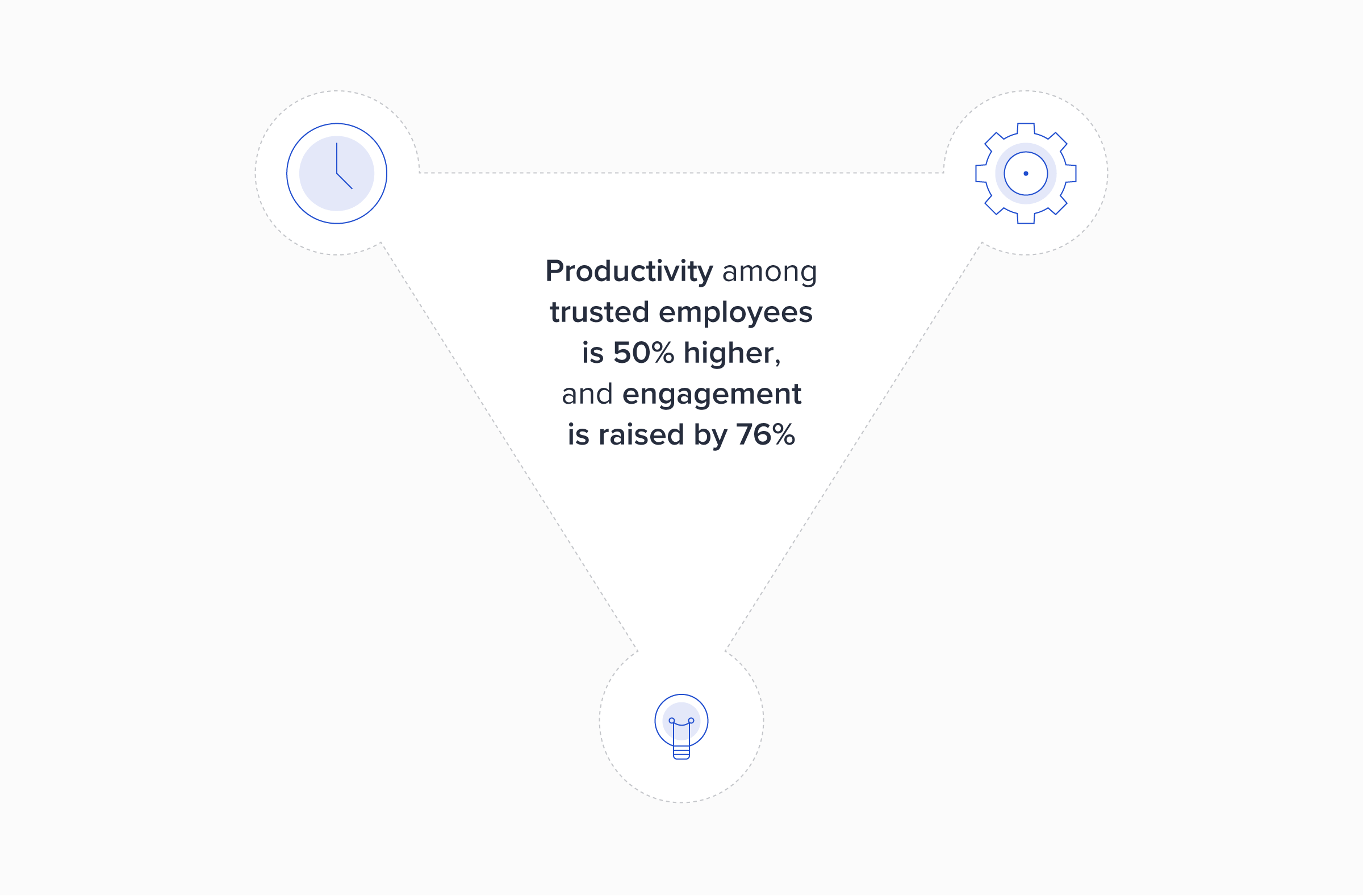
To reap the benefits of trust, companies engaged in remote work must nurture their culture by establishing trusting workflows and routines. For instance, there should be more emphasis placed on output than the amount of time spent “at the desk.” Use project tracking tools that provide visibility, not oversight. Create a safe space and time to ask questions and challenge thinking so remote workers have a voice.
Efforts need to target relationship-building within teams. According to Zak’s neuroscience experiments, “when people intentionally build social ties at work, their performance improves.” Create virtual meeting spaces, encourage non-work related conversation channels, and provide experiences to get to know colleagues (such as personality tests or roundtable discussions). By amplifying the human factor, trust-building is a natural outcome within remote teams.
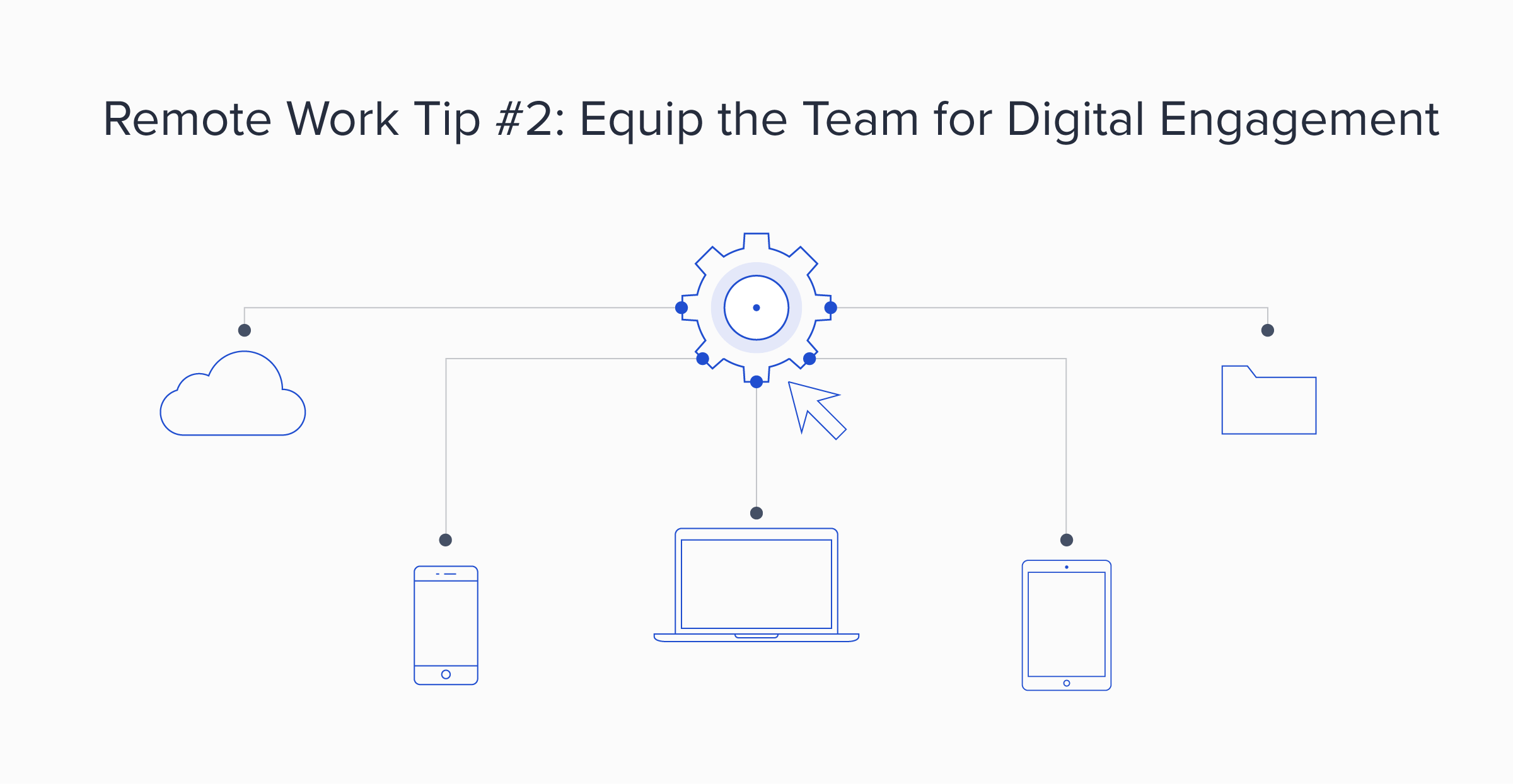
REMOTE WORK TIP #2: Equip the Team for Digital Engagement
As a standard requirement for the majority of modern jobs, digital tools are a key component to many roles taken on by remote workers. It’s these tools that can transform and enable relationships in a remote or hybrid workforce. More than 8 in 10 middle-skill jobs require digital skills, according to a recent Burning Glass report.
To leverage remote workers to do what they do best, begin integrating digital tools by identifying which are needed for a remote workflow. Tools like Slack and Microsoft Teams are a good place to start. Video conferencing is an essential pillar to successful remote work engagements as well. Setting a requirement that the video camera be turned on in every meeting will encourage everyone to show up and interact in a professional—albeit remote—environment.
Tools that don’t get used are often the casualties of remote work attempts. Consider creating a portal that houses everything for easy access and guidance. Then (and this is critical) train everyone—whether they’re remote, contingent, or full-time—to use these tools. There should be a level of comfort throughout the company so that tools are never a barrier to collaboration and progress.
These digital tools should be built into the cultural behavior of an organization to create a sense of inclusiveness among all types of team members. For example, if a company utilizes Slack for office communications but defers remote freelancer communications to email, it creates an unnecessary boundary for a team that often leads to miscommunication and frustration.
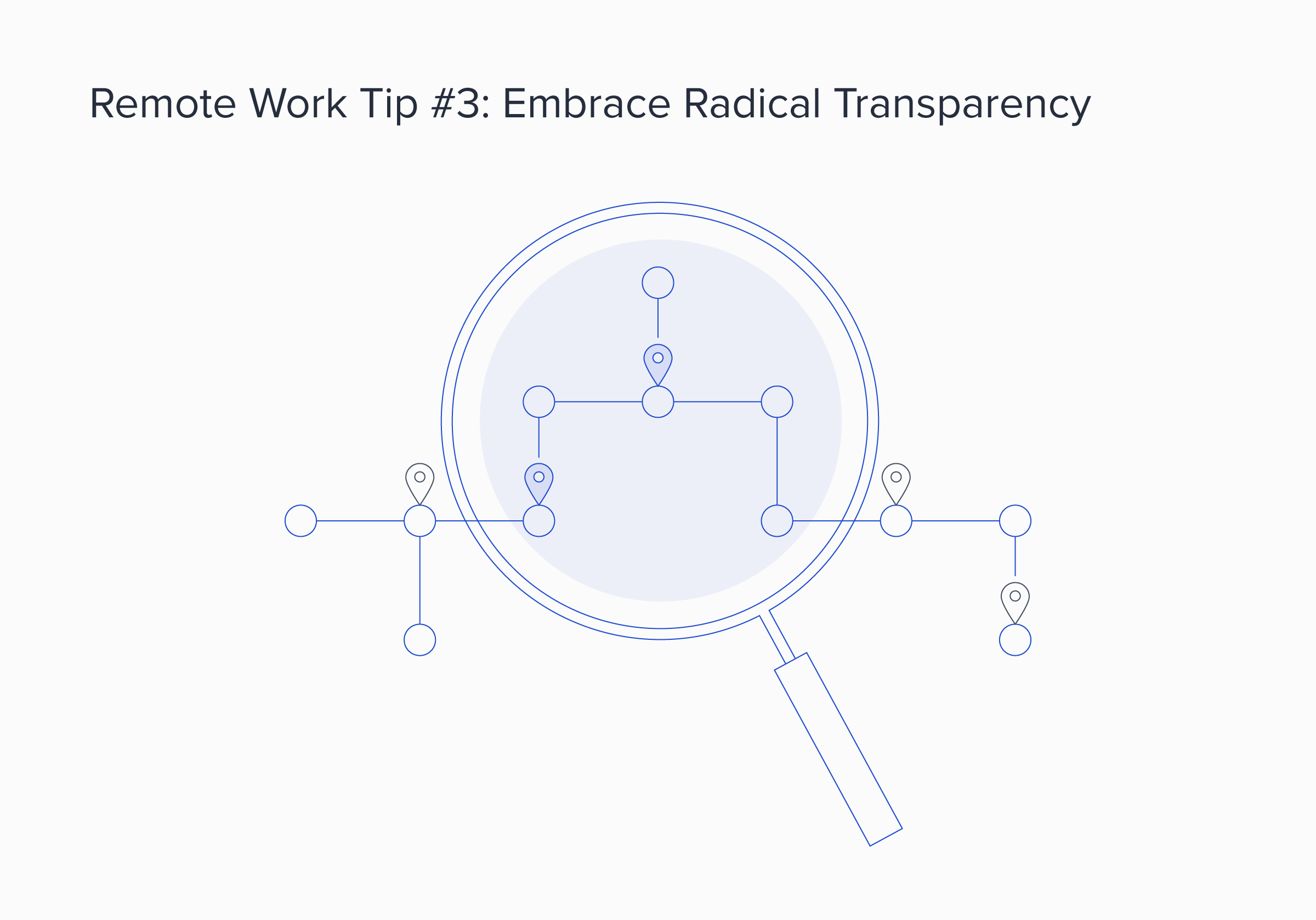
REMOTE WORK TIP #3: Embrace Radical Transparency
Large enterprises are commonly plagued with the silo-effect, where communication and shared resources don’t make the leap across departments or office locations. Success stories and lessons learned are hidden treasures that get forgotten soon after a team finishes one project and moves on to the next. Transparency is the key to ensuring that learnings are broadcast organization-wide.
Non-transparency can prevent remote talent from being successful throughout the organization. Encourage remote workers to share resources by creating a unified communication point for projects—a dedicated Slack channel, for example. Open access to this information can be fertile ground for unexpected crossovers.
When a company launches a remote program, progress should be shared fluidly. A strategic, shared dashboard can house progress, challenges, and KPIs for each remote employee or project. As adjustments are made to the remote work program, the entire company can see the progress and learn from what’s working in other departments and what isn’t.
Beyond tools for collaboration, create opportunities for open conversation where ideas, trials, and errors can be shared between remote workers or freelancers and in-office employees. One team’s success story can be another team’s inspiration. Ultimately, the program should promote transparency among engaged departments so everyone can learn from each other.
Confidence in the remote work program will grow as the company is exposed to knowledge and successes. It will build trust in remote workers and lay the foundation for relationships to flourish across boundaries.
The Bottom Line
Workforce practices are speeding toward uncharted territory, but if a company builds a strong, remote-friendly program that embraces both the current teams and future needs, it can embrace and leverage powerful innovations.
Get rid of the remote-unfriendly mindset and the procedures holding your company back. Build a successful program that addresses the three pillars of remote work: talent, tools, and transparency. Organizational tenets like procurement plans, digital workflows, and cross-departmental transparency will allow remote workers to thrive and your entire company to grow. As with all digital initiatives, it’s all about failing fast, learning, and pivoting.
